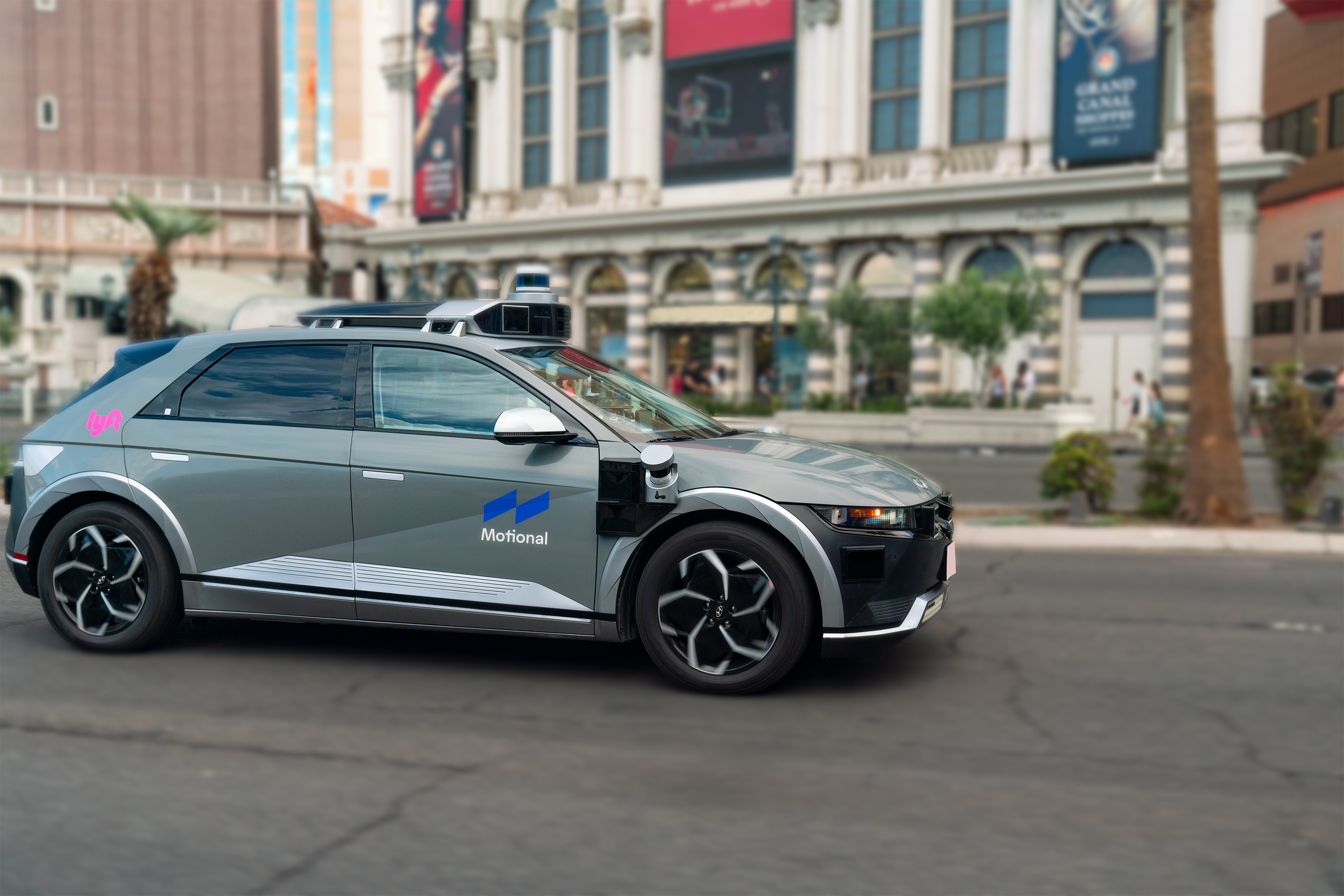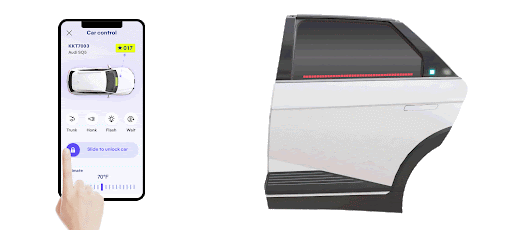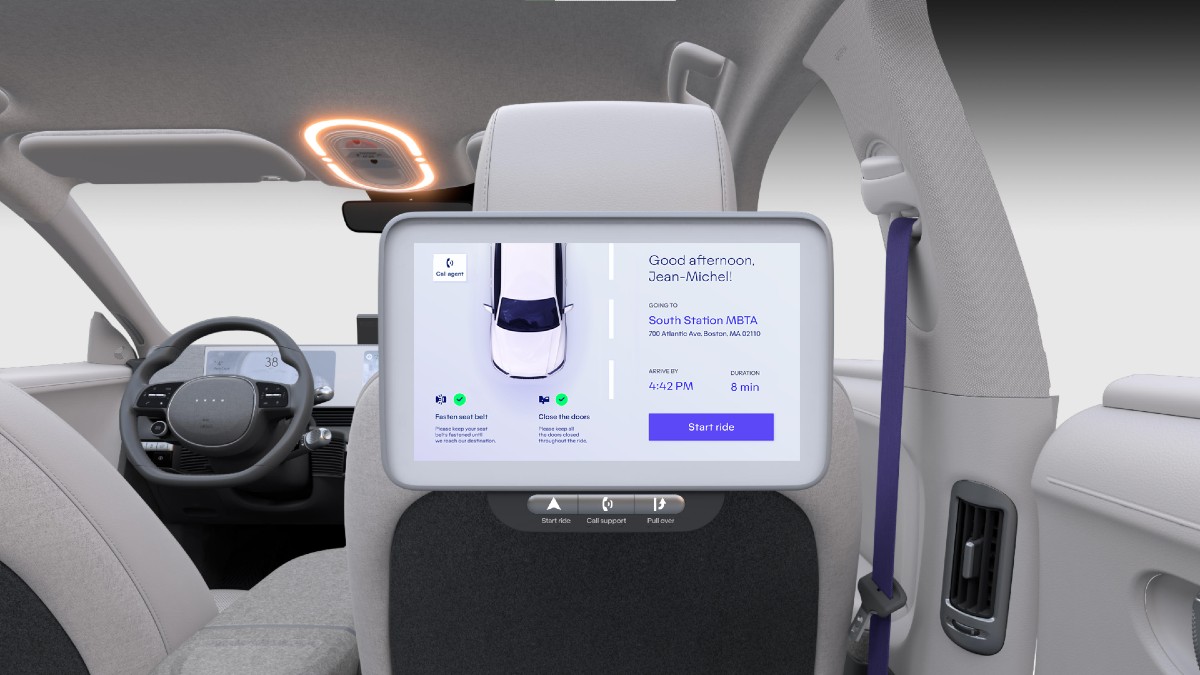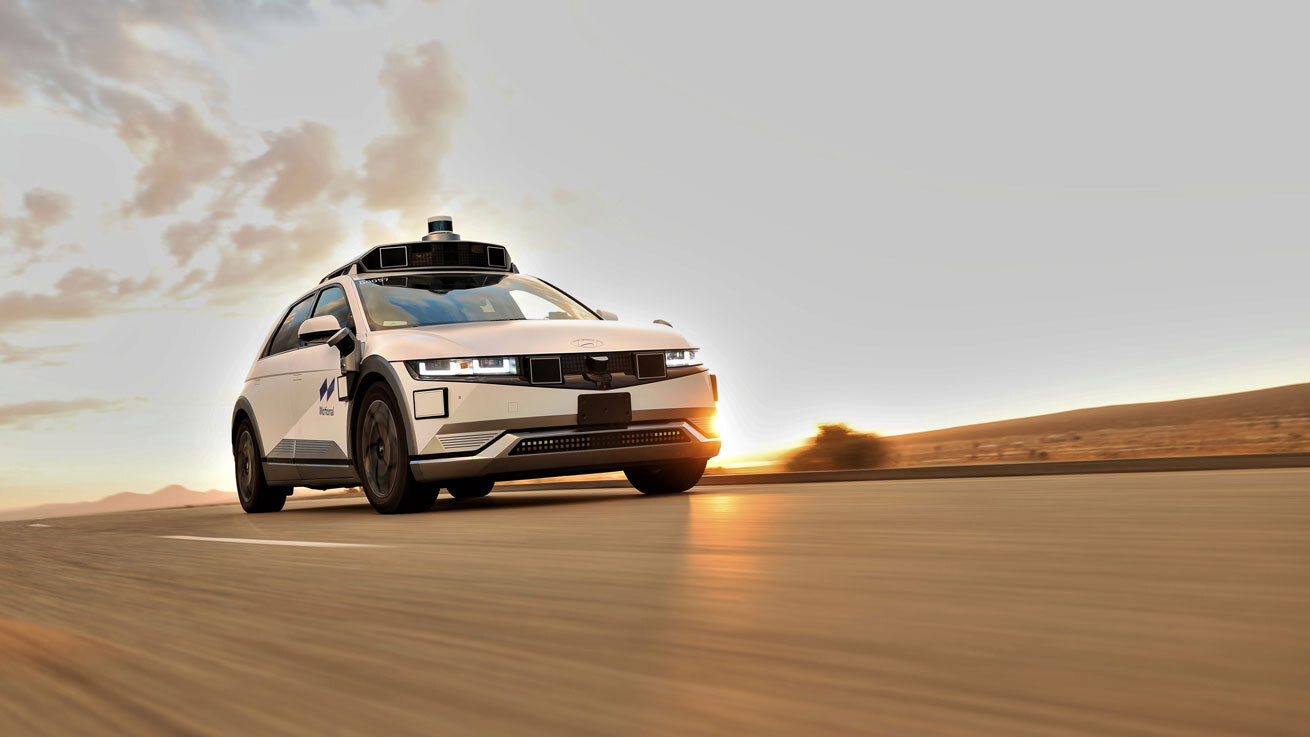Earlier this month, Motional unveiled our next-generation autonomous vehicle, the all-electric Hyundai IONIQ 5-based robotaxi, which will be the vehicle that introduces thousands of Lyft riders to driverless technology. We’re now providing a first look into the passenger’s driverless experience.

Designing the Driverless Ride
When using a ride-hail service, there’s a routine and familiar series of actions. We track the car’s location as it makes its way to us, and then match the license plate or car number with the information in our app.
If we have luggage, we place it in the trunk and then get in, settle into the backseat, and confirm our destination with the driver.
Once our trip is underway, we may have a conversation with the driver or choose to have a silent ride. Once we arrive at our destination, we exit the vehicle, check to see if we left anything behind, and end the trip.
How can these common interactions be replicated when there’s not a driver in the vehicle – and in a manner that seems intuitive and familiar for riders? Backed by extensive user research, Motional engineers and product teams designed our driverless experience to be as intuitive as a trip in a traditional ride-hailing vehicle – from the moment the robotaxi approaches a rider until after they exit.
A Seamless End-to-End Experience
Passengers in select cities can use our partners’ app to hail a Motional robotaxi. With more than 30 sensors mounted on the exterior of the car, the IONIQ 5 robotaxi will be easily identifiable.
But if a rider can’t find their vehicle, we're exploring ways to help them locate their ride, such as using their phone to tell the robotaxi to flash its lights or honk its horn. Passengers may also be able to locate their ride by matching an identifier on their phone — a number, for example — to the same identifier shown on an LED panel on the vehicle’s exterior.
Riders can then unlock the robotaxi’s automatic doors through the ride-hail app, and an LED strip along the bottom of the window will light up to indicate when riders can open the door. Passengers can also open the trunk with the push of a button on the app – a handy feature if they’re walking to their ride with a phone in one hand and luggage in the other.

If a passenger can't get into the vehicle — perhaps their cell phone died, or someone called for the ride on their behalf — they can talk to a remote customer assistant by pressing an easily accessible button above the rear door handle.
The IONIQ 5 robotaxi won’t move until riders push a “start” button. The vehicle will first go through an automated safety check, using in-cabin sensors to detect the number of passengers and ensuring that doors are closed before the ride starts.
We know through our user research that autonomous vehicle passengers feel more comfortable when they understand why a driverless vehicle is making certain decisions during the ride. Motional’s robotaxis will have three high-resolution touch screens providing real-time ride information from ride-hail partners, such as a route map and estimated time of arrival.

We also know passengers, absent a human driver, want to ensure they maintain a degree of control over their ride. Below each screen are three physical controls: the start button, a button that contacts remote customer assistance, and one that signals to the vehicle to safely pull over. These controls allow riders to quickly access basic ride functions or speak directly to a human if needed.
We Put Passenger Safety First
At Motional, safety is the foundation of everything we do and the IONIQ 5 robotaxi has integrated features like in-cabin microphones, cameras, and sensors to keep riders safe. In addition to the controls beneath the screens, there are two extra ceiling-mounted buttons that place a priority call to remote customer assistance.
Designing for Accessibility
One of Motional’s key principles is to make safe and reliable robotaxi service accessible to everyone, including to those with disabilities. We’ve worked closely with advocacy groups, such as the Institute for Human Centered Design, to include features addressing a range of mobility needs.
For example, we’ve included Braille on the external passenger-assistance button and raised shapes on the control buttons beneath the interior displays. We also designed signage to serve those with cognitive impairments and made touch buttons available as an alternative for those unable to use touch screens.

A Comfortable Ride
The all-electric platform means the IONIQ 5 robotaxi has a longer wheelbase and flatter floorboard than a traditional vehicle. Our robotaxi has room to comfortably fit four riders: three in the back and one in the front passenger seat. Additional ambient lighting lets passengers see into the car to check if it is safe to get in, and it helps riders keep track of their belongings before they get out of the car at night.
Because our IONIQ 5 robotaxi won’t have a driver, our built-in sensors can detect left-behind items in the cabin or belongings in the trunk, and external speakers can alert passengers as soon as they step out of the vehicle. If the passenger is already dashing into the airport, for example, the lost belongings can be flagged, and customer assistance will work to return it to the rider.
Making Robotaxi Service Routine
An awkward and frustrating initial robotaxi experience could discourage the passenger from taking a robotaxi again. We want riding in the IONIQ 5 robotaxi to be both an amazing display of advanced technology, but also a routine part of a person’s day.
By focusing on passenger experience, Motional has designed a unique vehicle that feels familiar, safe, and comfortable – and ready to change the way the world moves.

